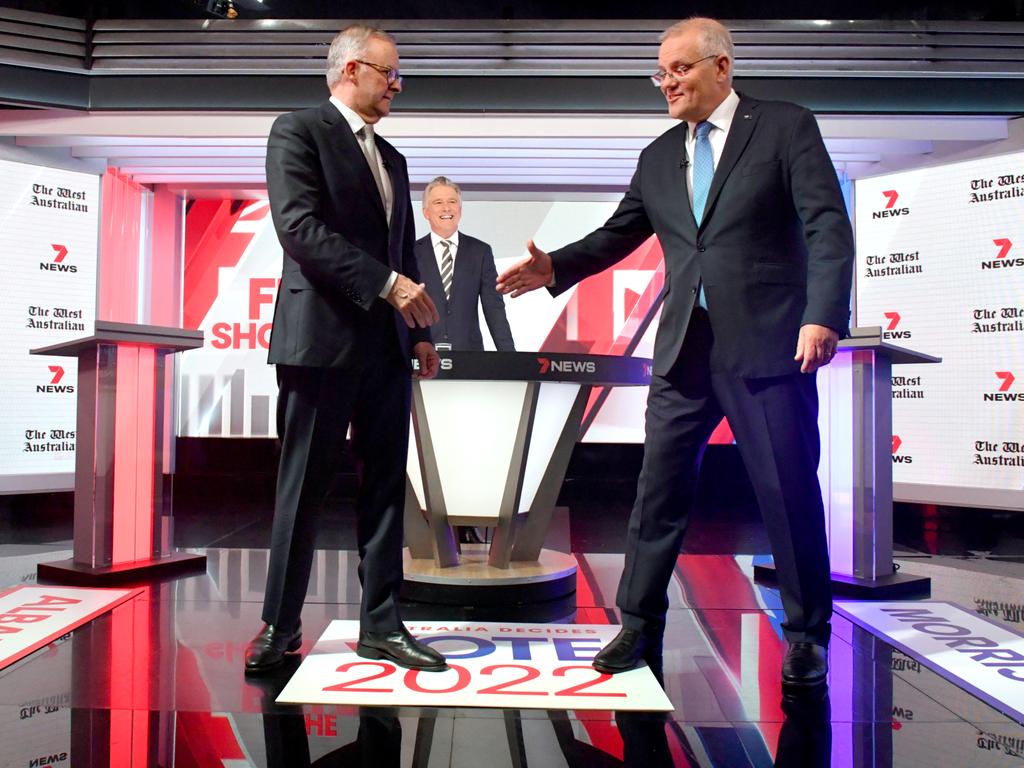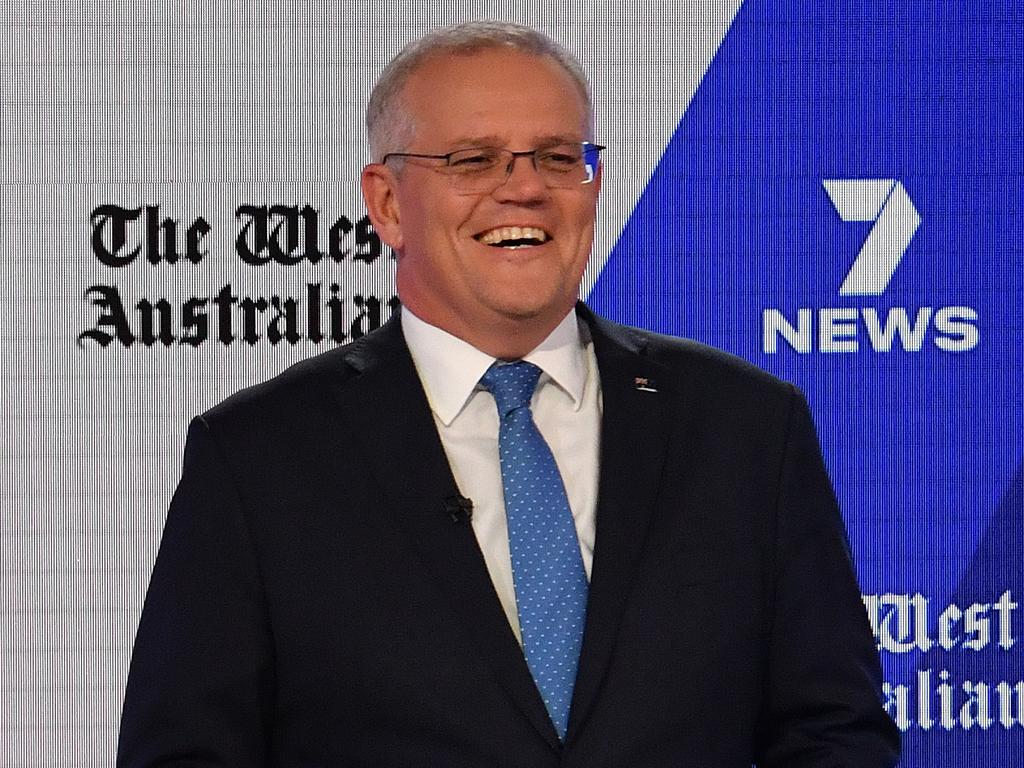Body language expert weighs in on third leaders debate
With just a little over a week until the election, Scott Morrison is facing more and more pressure. And his body language is showing it.
The leaders’ debates are done and dusted, but there is much to be learnt from the way Scott Morrison and Anthony Albanese performed.
The third leaders debate, hosted by Channel 7’s Mark Riley, saw the leaders take on a far more subdued approach to debating and even, quite remarkably, including a couple of compliments, albeit forced by the host.
Connection and body language expert Katia Loisel went over the footage from Wednesday night’s debate and says the pair’s “agitation was on display for all to see”.
“As the final debate opened, both leaders displayed signs of discomfort and nervousness,” she told news.com.au.
“Despite an open, wide leg stance, Albanese’s ducked head and turtling of the neck, restless legs, and hands clasped in front, fingers interlaced fingers indicated vulnerability and emotional discomfort.

“In contrast Morrison appeared more confident, his hands resting lightly on the podium, an asymmetric dominance smile dancing on his lips. Whilst his body language says, ‘I’ve got this,’ a fleeting attempt to lubricate his mouth suggests that he was feeling far from confident.”
Ms Loisel said the toll of the campaign was “clearly evident in Morrison’s opening statement, with the Prime Minister taking a beat to warm up”.
“In contrast to his normally open body language and expressive palm up hand gestures, during the first minute of the opening statement Morrison used the lectern as a clutch, gripping onto the sides, raising his hands only temporarily before dropping them back down to the sides. “This is unlike Morrison and in combination with the use of single rather than double hand gestures and furrowed brow indicates a level of discomfort and insecurity.”
RELATED: James Weir recaps the third leaders’ debate

She said the Opposition Leader had been “crippled by performance anxiety in the past weeks” but “started strong with open and expressive hand gestures and fingers pointed together in a steeple suggestion a spike in confidence”.
“However, that spike in confidence was short lived, his hands reforming an interlaced clasp after each gesture, and lowered chin and gaze, compressed lips, clenched jaw, averted gaze and the use of manipulators such as fidgeting with his notes revealed feelings of nervousness and insecurity and a need to self-soothe.
“We feel the tension of the campaign when we see what is called a hard swallow, revealing a build up of tension and a reliable indication of negative emotion and an often-subconscious response to stress and anxiety.
“Like most of us, both leaders use non-verbal crutches in an attempt to self-soothe and deal with negative emotions and arousal.
“Morrison reverts to the using the lectern as a non-verbal crutch, using single hand gestures and at times clasping his hands in front of his abdomen between each gesture in response to negative arousal, discomfort and nerves.

“Albanese on the other hand, tends to shift his weight and clasp his hands in front of his abdomen, fingers interlaced in a subconscious attempt to protect himself during times of stress and discomfort. His gestures at times facing inwards slightly towards his chest before coming back down into a clasp.”
Ms Loisel said “dominance displays” were few and far between in the first half of the leader’s debate but as the debate wore on, “we saw an increase in dominance displays such as jaw jutting, finger pointing and the dominant smile from Mr Morrison.
Mr Albanese, she says, “took a more passive role in the second debate but on Wednesday night showed “increased frustration, agitation and dominance displays”.
“His body’s way of saying, ‘I’m not backing down.’ For instance, at 22.26 Albanese uses the finger point whilst accusing Morrison of wasting taxpayers’ money, saying ‘The waste that you have done,’ using the point to emphasise his point and denote the severity of what he is saying.”





